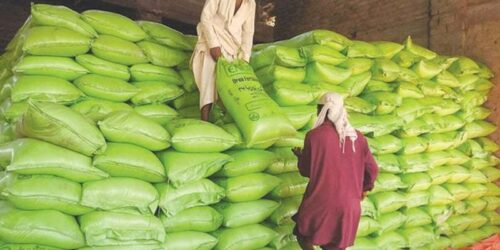Engro Fertilizers Chief Financial Officer (CFO) Imran Ahmed has more than 20 years of diversified work experience in leadership and management positions in large firms in Pakistan and abroad.
He recently spoke with Dawn on issues relating to deregulation of the fertiliser industry and the development of an effective mechanism for providing direct, smart subsidy to the small farm holder, and how these policy changes will benefit the stakeholders: small farmers, urea producers, government, and on and on.
“There’s a perception in the market that urea manufacturers are profitable because they get gas at subsidised prices. No sir; that is not correct perception. We are profitable because we are internationally competitive even without subsidised gas and can even fetch export revenues of $400-500 million a year if deregulated,” Mr Ahmed says as he gives details of a 10-year analysis of the industry.
The analysis shows that the subsidy passed on by the industry to the farmers is way more than what we have received by way of subsidised gas prices from the government. The industry has foregone at least Rs500bn in its revenues in the last 10 years by selling urea to growers at highly discounted rates compared with the international prices.”
Currently, the producers are getting a subsidy of Rs842 per mmbtu on gas but say they are competitive even at the current LNG prices if deregulated and allowed to charge import parity prices for their urea.
You withdraw subsidy, provide us gas at the WACOG (or weighted average cost of gas) and let us sell our product at import parity price. We will show you that we are internationally competitive and can earn more money and even export,” Mr Ahmed insists.
Pakistan’s fertiliser industry is a major contributor towards the agriculture sector of the country. The sector contributes around 4.4 per cent to large-scale manufacturing and nearly 1pc to GDP. According to Pakistan Credit Rating Agency (Pacra), the industry’s revenues in 2020 stood at Rs381 billion. The Pacra report says local urea prices operate at a significant discount to the international urea price. The delta between the two rose to as high as about 41pc and 36pc in 2018 and 2019. According to the urea makers, the delta rose to over 80pc this year as the international commodity prices jumped on supply disruptions and because of other factors in the post-Covid period.
The urea industry made an investment of Rs162bn in capacity expansions and plant upgrades in the last 10 years and its ability to meet the domestic demand has shielded Pakistan from the Covid-induced shocks in global urea prices that have surged by 86pc since last year. Through import substitution, the fertiliser industry is estimated to contribute more than $3bn towards reducing the trade deficit in 2021. As a result of the significantly lower prices, the local fertiliser industry will save farmers from an additional burden of Rs363bn.
The return on equity and return on assets of the fertiliser industry at 33pc and 11pc are, the producers said, much lower than major industries, including food and personal goods, automobiles, and oil exploration and production. The return on equity and return on assets for other industries are as high as 67pc and 19oc.
“Currently the fertiliser industry is providing urea at a significant discount of Rs5000/50kg bag compared to imported fertiliser. By deregulating the industry and introducing WACOG for all manufacturers, including indigenous gas and imported RLNG-based plants, the government can earn higher revenues and reduce the country’s fiscal imbalance,” he contends.
That means urea will be available to the growers at much higher prices compared to import parity costs. “Agricultural productivity and framers incomes, especially at the bottom of the pyramid, could take a massive hit if no countermeasures are taken to mitigate this adverse outcome; the government will need to implement smart subsidy mechanism for smallholders.”
Mr Ahmed says the removal of gas subsidies to the urea producers will transfer Rs89bn from the industry to the national exchequer, which is more than the amount it needs to finance the targeted subsidy of around Rs65bn for small landholders. It will still save Rs24bn.
“Around 90pc of the farmers own around 48pc of the land, with a size of less than 12.5 acres. These smallholders need to be subsidised and not the 10pc who own 52pc of land. The equal flow of subsidies to both big and small growers has to be stopped. You cannot treat a person who earns Rs10m and another who takes home a couple of hundred thousand equally. How long can we sustain these kinds of policies? Especially, when the International Monetary Fund is breathing down our neck?”
Mr Ahmed acknowledges that food inflation is one of the biggest challenges facing people and the government. But he stresses that urea prices do not have any impact on food inflation. He says fertilisers form just 2.4pc-3pc of the farm input costs. “The removal of feed gas subsidy on the production of urea and diammonium phosphate (DAP) will not have a significant impact on the prices of major crops and resultant expenditure of family households in Pakistan.”
According to his calculations, every Rs50 per bag increase in urea price has an impact of only 1 paisa on the price of a ‘roti’. The impact of a Rs50/bag increase in urea price on other agri commodities like rice, sugar, maize, potato, tomato and banana is all within 10 paisas per kilo.







